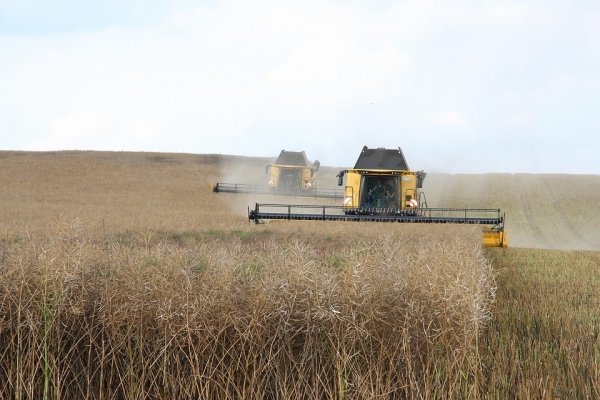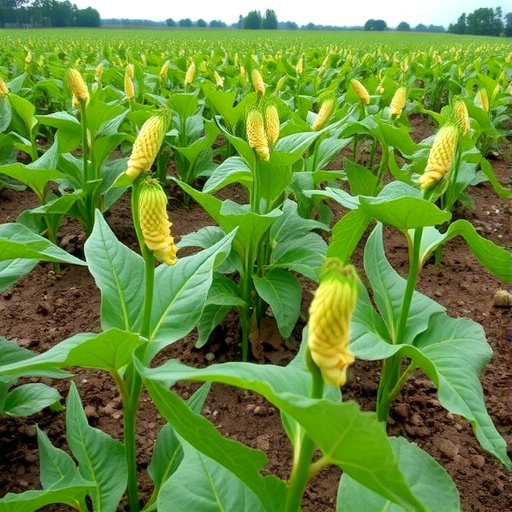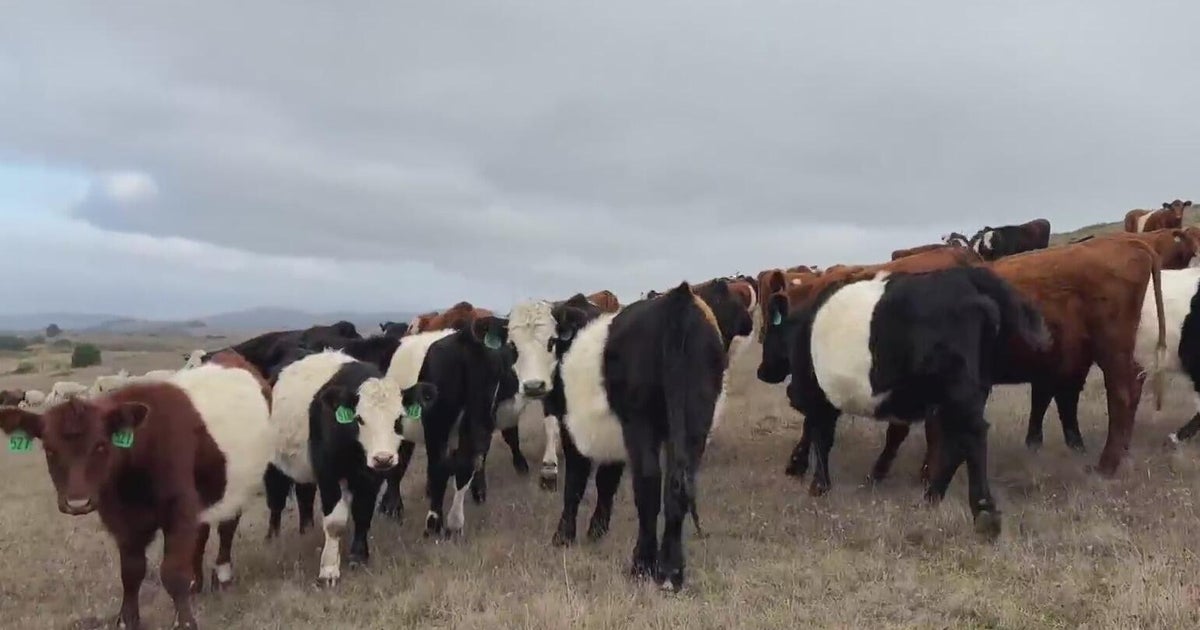Improving Sustainability of Inland Pacific Northwest Dryland Agriculture Systems with Pea-Canola Intercropping: A Review – Frontiers

Report on Peaola Intercropping as a Sustainable Agricultural Strategy in the Inland Pacific Northwest
This report reviews the potential of spring pea and spring canola intercropping, known as “peaola,” as a sustainable agricultural practice in the dryland cropping systems of the inland Pacific Northwest (iPNW). The analysis focuses on the alignment of this practice with the United Nations Sustainable Development Goals (SDGs), particularly those concerning food security, climate action, water management, and terrestrial ecosystems.
1.0 Context: Agricultural Unsustainability and Climate Change in the iPNW
Traditional dryland agricultural systems in the iPNW, predominantly winter wheat-fallow rotations, face significant sustainability challenges exacerbated by changing weather patterns. These challenges directly impact regional progress toward several SDGs. Key issues include:
- Decreased crop productivity due to climate variability, threatening SDG 2 (Zero Hunger).
- Soil degradation and inefficient water use, undermining SDG 15 (Life on Land) and SDG 6 (Clean Water and Sanitation).
- Increased pressure from herbicide-resistant weeds, complicating efforts for sustainable production under SDG 12 (Responsible Consumption and Production).
There is an urgent need for innovative agronomic strategies that build resilience and enhance sustainability in alignment with these global goals.
2.0 Peaola Intercropping: A Pathway to Achieving Sustainable Development Goals
Peaola intercropping is identified as a promising alternative management strategy with the potential to deliver multiple agroecosystem benefits. Its adoption can directly contribute to the achievement of key SDG targets.
2.1 Advancing Food Security and Sustainable Agriculture (SDG 2)
Peaola systems contribute to Target 2.4, which aims to ensure sustainable food production systems and implement resilient agricultural practices. This is achieved through:
- Increased land use efficiency compared to monoculture systems.
- Enhanced agroecosystem biodiversity, which strengthens the resilience of food production.
- Potential for stable or increased yields under adverse conditions, securing food supply.
2.2 Strengthening Climate Action and Resilience (SDG 13)
In line with Target 13.1, which seeks to strengthen resilience and adaptive capacity to climate-related hazards, peaola intercropping offers significant advantages:
- Improved Drought Resilience: The synergistic relationship between peas and canola enhances overall water use efficiency, making the system more robust during periods of low rainfall.
- Reduced Pest Pressure: Increased biodiversity within the cropping system can naturally suppress pest populations, reducing reliance on chemical inputs and adapting to climate-driven shifts in pest dynamics.
2.3 Protecting Terrestrial Ecosystems and Soil Health (SDG 15)
Peaola cultivation directly supports Target 15.3, which aims to combat desertification and restore degraded land and soil. Key contributions include:
- Improved Soil Health: The practice promotes better water infiltration, increases soil organic matter turnover, and enhances nutrient cycling.
- Enhanced Biodiversity: Intercropping diversifies the farm landscape, providing habitats and resources for a wider range of organisms, thereby supporting terrestrial ecosystems.
2.4 Promoting Efficient Resource Management (SDG 6 & SDG 12)
The system enhances resource use efficiency (RUE), a cornerstone of sustainable development.
- Water Use Efficiency (WUE): By optimizing water capture and use, peaola contributes to Target 6.4, which calls for substantially increasing water-use efficiency across all sectors.
- Responsible Production: Peaola systems can lead to a reduction in production inputs like fertilizers and herbicides, aligning with the principles of sustainable management and efficient use of natural resources under SDG 12.
3.0 Barriers to Implementation and Future Recommendations
Despite its potential, the widespread adoption of peaola in the iPNW is hindered by several factors that must be addressed to unlock its sustainability benefits.
- Management Complexity: Intercropping requires more sophisticated management skills than traditional monoculture.
- Lack of Region-Specific Research: There is a critical need for localized research to optimize peaola production for the specific conditions of the iPNW.
- Market Constraints: Challenges related to harvesting, separating, and marketing two different crops simultaneously present economic barriers for producers.
4.0 Conclusion
The practice of peaola intercropping presents a compelling opportunity to advance sustainable agriculture in the iPNW. By enhancing resource efficiency, building climate resilience, and improving soil health, it directly supports the achievement of SDG 2, SDG 6, SDG 12, SDG 13, and SDG 15. Overcoming the existing barriers through targeted research, policy support, and market development is crucial for leveraging peaola’s potential to transform regional food systems toward greater sustainability and resilience.
Analysis of Sustainable Development Goals in the Article
1. Which SDGs are addressed or connected to the issues highlighted in the article?
The article on peaola intercropping in the inland Pacific Northwest (iPNW) addresses several interconnected Sustainable Development Goals by focusing on creating more resilient and sustainable agricultural systems.
- SDG 2: Zero Hunger: The core theme is improving crop production systems to ensure they are sustainable and productive in the face of changing weather. It focuses on resilient agricultural practices to maintain food security.
- SDG 6: Clean Water and Sanitation: The article explicitly emphasizes the need to improve crop water use efficiency (WUE) and water infiltration, which are critical for sustainable water management in dryland agriculture.
- SDG 13: Climate Action: The research is motivated by the “negative impacts” of “changing weather conditions.” The proposed peaola system is presented as a strategy to build “drought resilience,” directly addressing adaptation to climate-related challenges.
- SDG 15: Life on Land: The article highlights the importance of protecting “soil health,” improving “soil organic matter turnover,” and promoting “agroecosystem biodiversity.” These are central to combating land degradation and preserving terrestrial ecosystems.
2. What specific targets under those SDGs can be identified based on the article’s content?
Based on the solutions and challenges discussed, the following specific SDG targets are relevant:
- Target 2.4: “By 2030, ensure sustainable food production systems and implement resilient agricultural practices that increase productivity and production, that help maintain ecosystems…and that progressively improve land and soil quality.”
- Justification: The article’s entire premise is to find “more sustainable” alternatives to “traditional winter wheat-fallow systems.” It proposes peaola intercropping as a resilient practice that improves soil health and resource use efficiency, directly aligning with this target’s goal of building sustainable and resilient food systems.
- Target 6.4: “By 2030, substantially increase water-use efficiency across all sectors and ensure sustainable withdrawals and supply of freshwater to address water scarcity…”
- Justification: The article repeatedly states that new crop rotations must prioritize “crop water use efficiency (WUE)” and that peaola intercropping “increases RUE and WUE.” This directly addresses the goal of increasing water-use efficiency in the agricultural sector.
- Target 13.1: “Strengthen resilience and adaptive capacity to climate-related hazards and natural disasters in all countries.”
- Justification: The research is a direct response to “changing weather conditions” impacting crop production. The article identifies “drought resilience” as a key potential benefit of the peaola system, positioning it as an adaptive strategy to mitigate the impacts of climate-related hazards like drought.
- Target 15.3: “By 2030, combat desertification, restore degraded land and soil, including land affected by desertification, drought and floods, and strive to achieve a land degradation-neutral world.”
- Justification: The article emphasizes that peaola can provide benefits such as “improved water infiltration, soil organic matter turnover, [and] nutrient cycling.” These actions directly contribute to protecting and restoring soil health, which is the central aim of this target.
3. Are there any indicators mentioned or implied in the article that can be used to measure progress towards the identified targets?
The article mentions or implies several measurable indicators that can track progress towards the identified targets:
- For Target 2.4 (Sustainable Food Production):
- Productivity: The article mentions the need for systems that are “equally productive,” implying that crop yield is a key metric.
- Land Use Efficiency: This is explicitly mentioned as a benefit of peaola, suggesting it as a measure of sustainability.
- For Target 6.4 (Water-Use Efficiency):
- Crop Water Use Efficiency (WUE): This is a primary indicator mentioned multiple times as a goal and a benefit of the peaola system.
- Water Infiltration: The article explicitly states that peaola offers “improved water infiltration,” which can be measured to assess progress.
- For Target 13.1 (Climate Resilience):
- Drought Resilience: Mentioned as a key benefit. Progress could be measured by comparing the stability of yields in peaola systems versus traditional systems during drought years.
- For Target 15.3 (Land and Soil Health):
- Soil Health: Explicitly mentioned as a priority. This can be measured through indicators also mentioned in the text, such as:
- Soil Organic Matter Turnover: An explicit benefit cited in the article.
- Nutrient Cycling: Another explicit benefit that can be monitored.
- Agroecosystem Biodiversity: Mentioned as a benefit of intercropping, which can be assessed to measure ecosystem health.
4. Summary Table of SDGs, Targets, and Indicators
| SDGs | Targets | Indicators Identified in the Article |
|---|---|---|
| SDG 2: Zero Hunger | Target 2.4: Ensure sustainable food production systems and implement resilient agricultural practices. |
|
| SDG 6: Clean Water and Sanitation | Target 6.4: Substantially increase water-use efficiency. |
|
| SDG 13: Climate Action | Target 13.1: Strengthen resilience and adaptive capacity to climate-related hazards. |
|
| SDG 15: Life on Land | Target 15.3: Combat desertification, restore degraded land and soil. |
|
Source: frontiersin.org

What is Your Reaction?
 Like
0
Like
0
 Dislike
0
Dislike
0
 Love
0
Love
0
 Funny
0
Funny
0
 Angry
0
Angry
0
 Sad
0
Sad
0
 Wow
0
Wow
0






































































![Significant progress made, but urgent action continues to be needed with 16 million people facing severe levels of acute food insecurity and 1.6 million children acutely malnourished in Bangladesh [EN/BN] – ReliefWeb](https://reliefweb.int/sites/default/files/styles/large/public/previews/31/9e/319ed978-b5f5-4b6d-9b3d-e530da6422ec.png?#)







